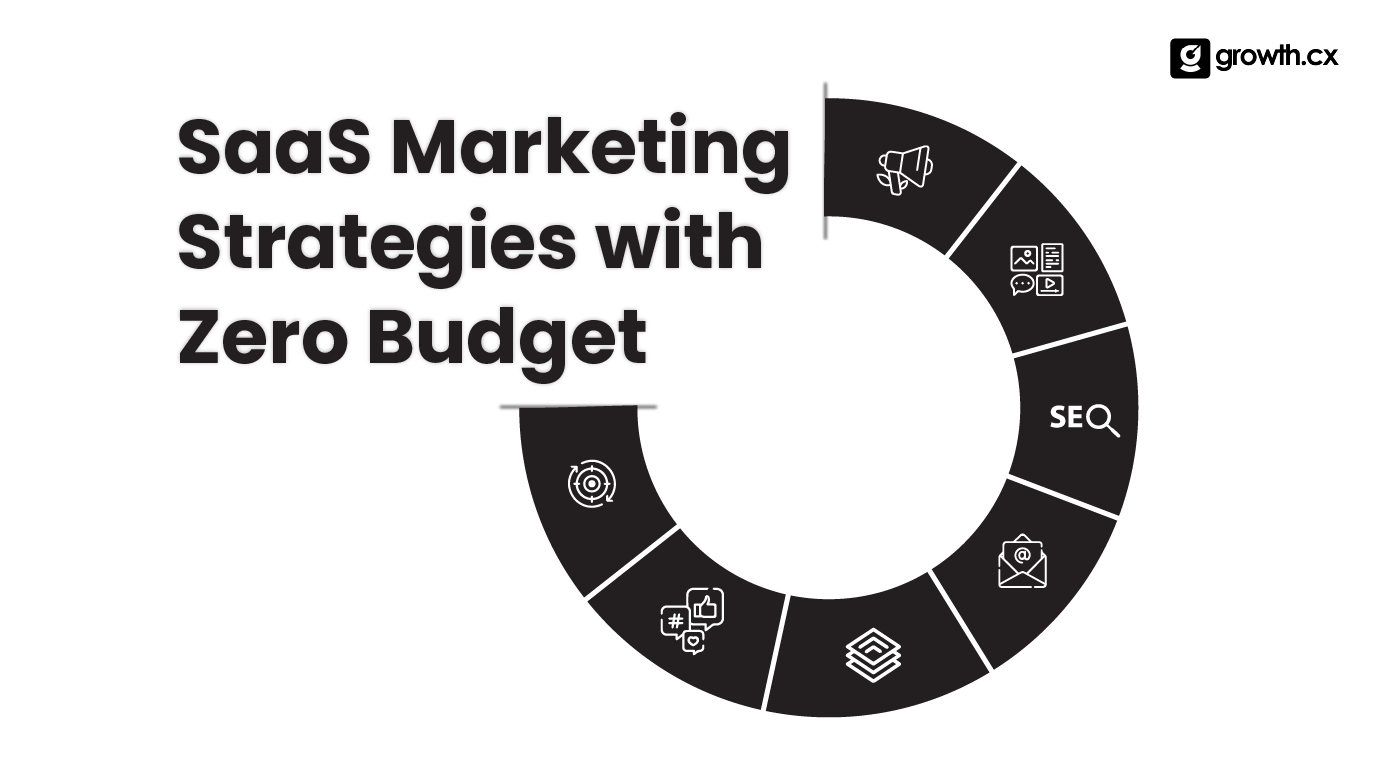Here’s a common myth that we are tired of hearing. What is it, you may ask? Well, it is the age-old misconception that a SaaS Startup marketing budget costs an arm and a leg!
Take it from us, it does not! SaaS start-up marketing does not require a big budget, not when the internet stands by you.
We are certain that a mere statement doesn’t convince you because many of our clients weren’t at first. We had to sit down on a call and explain to them how.
Wise words from Seth Godin and Neil Patel remind us that storytelling and creativity are key. Implementing cost-effective marketing strategies not only saves money but also builds a solid foundation, genuine connections, and long-term success.
In this blog post, we have decided to explain in detail how you can grow your SaaS Startup marketing with a minimal (even $0) budget in 2024.
Once you reach the end of this post you will know why we say this, so confidently. So, read along and find out.
7 Strategies to Boost your SaaS Startup Marketing in 2024 on a Low Budget
While one might think that they need a big budget for marketing their SaaS startup, in reality, you only need a fraction of the so-called SaaS startup marketing budget, and it is sometimes even close to nil! You just need to focus on organic marketing, i.e. connect with your target audience and make Google happy. So, let’s dig in and find out how you can boost your SaaS marketing with a minimal budget.
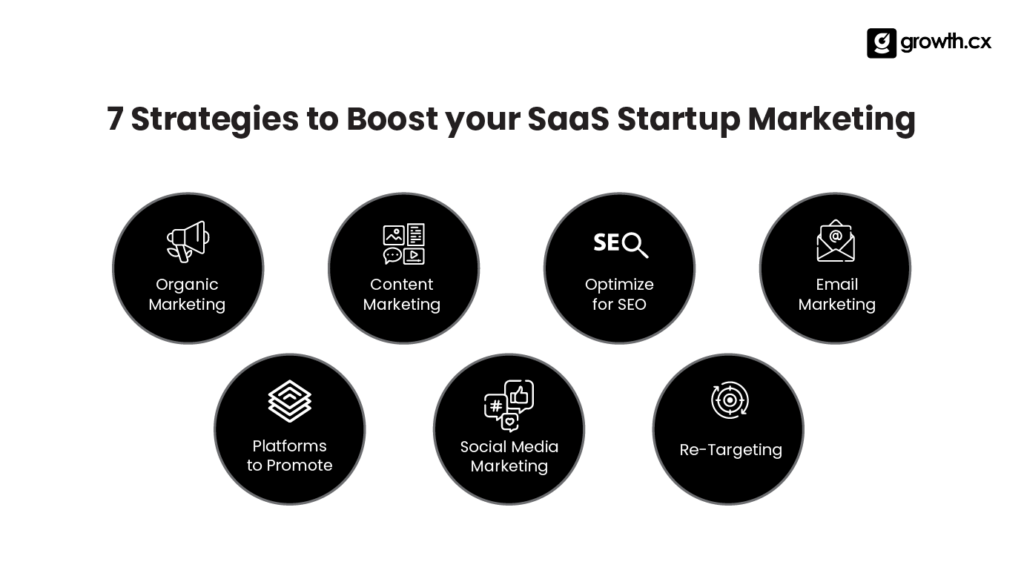
1. Prioritize Organic Marketing
You can definitely spend money on paid acquisition channels like Google Adwords and Facebook to attract clicks to your website, but that won’t bear fruits unless you establish credibility. So, how do you do that? Through organic marketing.
Let’s see simple statistics – 83% of blog traffic for SaaS companies comes from organic search.
By creating resources that comply with the SEO standards and impart value to your target audience and attract them to your site. When you create content and stories that they relate to, the traffic to your site will increase and Google will place your content in the top position of SERP. Organic marketing helps you build a brand, spread awareness, and drive traffic on a long-term basis.
And the cherry on top? You don’t have to spend a penny on it. Now, when you consider paid marketing, which not only requires you to spend money on it but also hire a specialist to drive it, organic marketing is definitely the cost-effective option.
P.S: What we recommend is to start with organic marketing and, when the time is ripe slowly incorporate paid marketing. The results will be much more reliable then.
2. Content (Marketing) is King
Content marketing has become one of the most vital parts of growth. It is, in fact, a part of organic marketing and is being widely adopted due to its effective nature. A well-planned content strategy has the ability to reduce customer acquisition costs by a big ratio.
You may not be aware of this, but 98% of the top SaaS companies have blogs in their marketing strategies.
So, how do you plan your content strategy?
- First and foremost, you need to understand your target audience thoroughly and create content pieces that will help them solve their pain points, and educate them. Keeping this in mind, you need to find topics.
- Once the topics are fixed, you need to find the appropriate keywords and not the other way around. Why, you may ask? User intent is key. So, you need to know what they want first. However, finding appropriate keywords is quite important too.
By the way, are you looking for a free keyword finder? We got you! Use Suitejar. It’s efficient, and it’s FREE!
- After getting the keywords sorted, you should plan the content for the next three months at least to keep curating content pieces without confusion.
- Then, pick content formats that work best for you, be it blogs, videos, newsletters, or landing pages. Creating content using multiple formats is a good way to go.
- Make it a point to optimize content UX so that you can engage the audience better. Create quality pieces that are broken down into easily readable paragraphs, maintain a table of contents, and add images, videos, and other helpful resources to enrich the content and keep the audience hooked to it.
- Also, do not forget to SEO-optimize content.
- Then, of course, you can publish and distribute it on various channels like Facebook, Linkedin, Medium, etc.
- Last but not least, track your content performance.
| P.S. Want to have an in-depth idea about content strategies? Read: The MOST Straightforward B2B SaaS Content Marketing Guide to Get 51% More Traffic! |
3. Optimize for SEO
Did you know? 49% of marketers consider organic search to be the channel with the highest ROI. This is exactly why search engine optimization is important.
Marketers make use of SEO to climb up the ladder of organic search position. SEO is basically a mix of technical and content practices to make improvements to your site’s structure and content so that people can discover your page while searching for a query by bumping up its position on SERP. By focusing on SEO, you can bring in more website visitors, increase brand awareness and credibility, and of course acquire way more customers than the traditional methods.
To understand how SEO works, you must first know that there are three main types of SEO: on-page SEO, off-page SEO, and technical SEO.
On-page SEO: On-page SEO is associated mainly with the content quality and structure of a page. This would include content engagement, keywords, headings, URLs, HTML tags, meta titles, descriptions, etc.
Off-page SEO: When it comes to off-page SEO, you try to enrich your page’s authority and credibility by getting links from other sites and pages. This includes backlinking, internal linking, etc.
Technical SEO:Technical SEO deals with the overall improvement of your site, and that will include UX, robot.txt, SSL certificates, schema, etc.
Now, let’s get into the workings of SEO.
Google has search crawlers that keep scanning the web constantly. They gather, categorize, and store web pages in their index. When you search for a query, Google will pull up the results from its index.
So, how does Google decide the order in which the results are presented to the user? The search engine uses a complex algorithm to position results based on a myriad of criteria like content quality, keyword relevance, domain authority, how people engage with the pages, etc.
Further, Google keeps a watch on the present order by gauging the user engagement ratio and then making changes to it if needed.
By focusing on certain factors that Google’s algorithm considers, you can boost your page rankings and eventually bring thousands of visitors to your site which in turn will help you boost credibility and customer acquisition rates. And the cost? Much much less than paid marketing. Also, with free SEO tools like Suitejar, you can further bring down the cost to $0!
So, if you haven’t started focusing on SEO, then do it right away. You will get the results, and it’s a guarantee.
You can also get assistance from a professional digital marketing agency to receive SEO services.
4. Invest in Email Marketing
Email marketing might be an old strategy, but as they say old is gold. Today, the average expected ROI of email marketing is $40 for every $1 spent on it. So, what do you think would be the smart move?!
Look into email marketing revenue statistics.
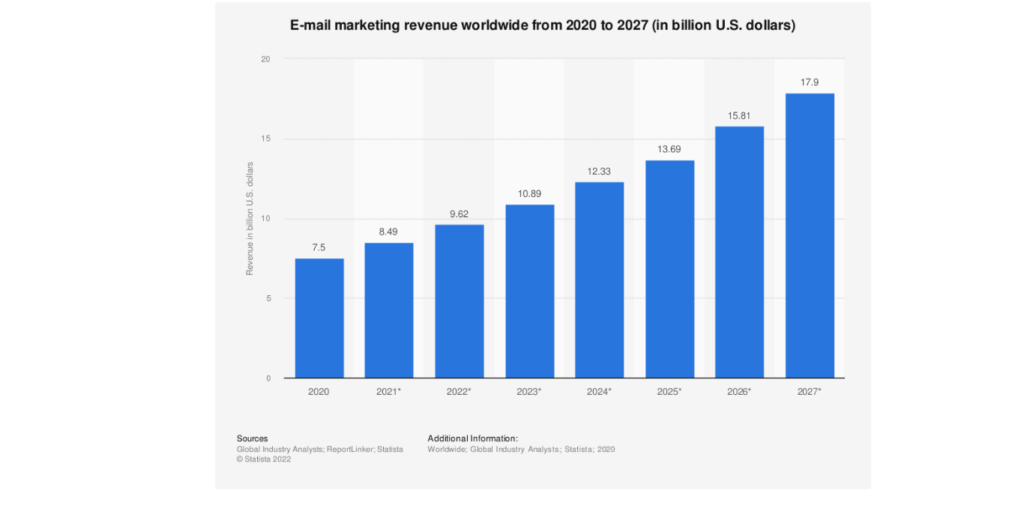
You can use emails to share your blog posts, send new updates on your product/service, lead generation, and customer onboarding, etc. This way, you can build personalized relationships with leads and customers, increase brand awareness, and promote your content and product effectively.
Now, let’s see how you can implement email marketing:
- Firstly, verify your leads. You need to make sure that you have valid and relevant email data. If you happen to share emails to invalid or non-existent email IDs on a frequent basis it’ll do more harm than good to your business as your reputation will be affected. So, email verification and validation are very important procedures.
- Make sure that the content of your email is short and to the point. Remember, your customers and leads are just as busy as you are. So, the content should be short, personalized, and engaging.
- Run referral campaigns. It helps you reach new audiences and increase your company’s revenue.
- Use emails for link building. Run outreach campaigns to get quality links to your posts from sites having good domain authority.
- Run drip campaigns. A drip campaign is basically an automated campaign that triggers a series of emails for every action that your customers take. This way, you can keep your customers posted and engaged, which will finally encourage them to buy or upgrade the deal.
- Set your Preferences: Make sure you share emails that are valuable for your customers. Observe their activities or simply ask your subscribers the kind of emails they prefer and make the necessary changes.
Also Read: Best Email Marketing Agency in 2024
5. Find Platforms Built to Promote SaaS Products
Make your product accessible on platforms that specifically cater to SaaS audiences. List your product on SaaS product listing sites with attractive offers or collaborate with brands that have a similar audience base. Here’s what you can do:
- List your Product on Product Hunt – Product Hunt is probably the most popular SaaS product listing site. The site receives at least 4 million visitors every month and has over 40k registered users. A well-strategized product launch can do wonders for your brand and can get you a good number of sign-ups. On product launch, you can talk about how your product works and what pain points it solves, along with helpful screenshots and videos. Add an undeniable offer to it, and you are good to go!
- Deal Sites – Leverage SaaS deal sites like Appsumo, SaaS Invaders, Pitchground, etc., to boost your sales tremendously. So, never miss out on these sites.
- Collaborate with Businesses – Try to make an effective collaboration campaign with SaaS organizations in the same niche so that the customers can get the best of both worlds. For example, Suitejar has integrated with Google Analytics to give its customers the combined features of both products.
6. Never Forget Social Media
Well, I know it’s a given. A huge population is present on social media and it is definitely one of the best places to generate leads. Despite all this, many SaaS startups fail to create a reliable and relevant social media strategy.
LinkedIn, especially, is a great place to market for SaaS B2B start-ups because a huge percentage of businesses are present on Linkedin, and the number keeps increasing. Does that mean you should ignore the other channels? Absolutely not! Social media platforms like Twitter, Instagram, Facebook, etc. can increase your followers and hence, boost brand awareness.
Studies show that about 90% of users will buy from brands they connect with on social media because they feel more loyal to them. Social media marketing is one of the important strategies for every SaaS business.
So, do make it a point to post on all social media channels. Here are some points to keep in mind.
- Create a winning strategy for each channel. Please note that one-size-fits-all doesn’t work here. You should create relevant strategies fit for each platform and post accordingly. However, you can repurpose a post to suit each social media platform. Consider engaging a social media marketing agency to receive support with your social media strategies.
- Post consistently. Make it a point to post weekly twice, at least.
- Be aware of the latest trends that are ruling your niche.
7. Re-Target
Retargeting is a powerful weapon in your marketing arsenal when it comes to growing your SaaS startup with a zero marketing budget.
It allows you to reach out to potential customers who have already shown interest in your product or service, increasing the chances of converting them into paying users.
By showing your customers personalized ads as they browse the web or social media platforms, you stay top-of-mind and remind them of the value you offer. This helps to rekindle their interest, encourage them to return to your site, and ultimately drive conversions.
To make the most of retargeting, explore various channels and platforms to reach your target audience wherever they may be.
Display advertising networks offer retargeting options that enable you to serve ads on relevant websites. Social media platforms like Facebook, Instagram, and LinkedIn also provide retargeting capabilities, allowing you to engage with prospects within their social feeds.
To maximize conversions, continuous optimization is key. A/B tests different ad variations, messaging, and targeting parameters to identify what resonates most with your audience.
Analyze performance metrics such as click-through rates, conversion rates, and return on ad spend to refine and improve your retargeting campaigns. By refining your strategy over time, you can increase the effectiveness of your efforts.
Real-Life Success Stories
Here are some examples of SaaS startups that succeeded with minimal marketing spend.
1. Buffer
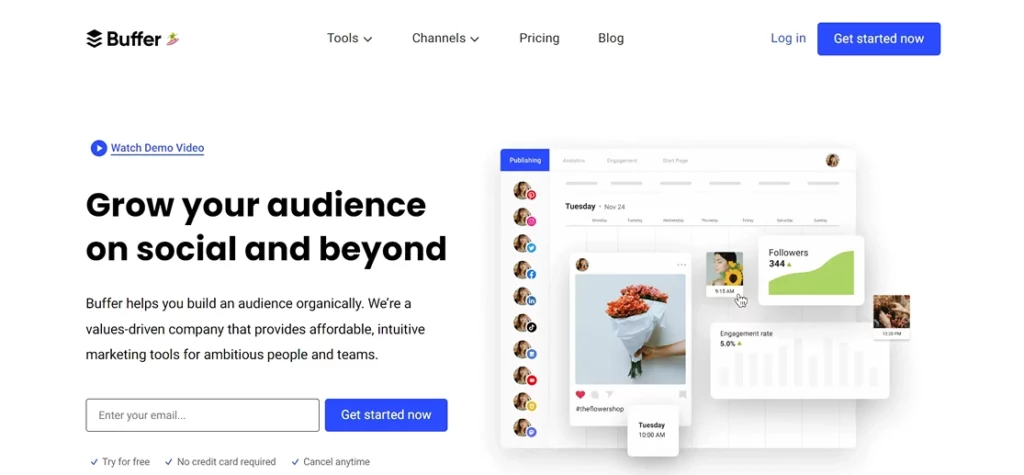
Buffer, the social media management platform founded in 2010 by Joel Gascoigne, stands out by prioritizing content marketing and transparent communication with its users.
In its early days, Buffer faced challenges in acquiring users and funding. Joel Gascoigne, the CEO, shared the company’s financial metrics openly, creating a culture of transparency that resonated with users.
- Buffer’s commitment to user satisfaction led to the transformation of many early adopters into passionate brand advocates. These advocates recommended the platform to others and defended it during crises.
- The company’s effective blogging and social media strategies significantly contributed to its growth.
- It is known for pioneering remote work practices, and this decision was partly influenced by its desire to hire the best talent globally while keeping costs in check.
- Buffer continued to innovate and expand its offerings, introducing features like Buffer Publish, Buffer Analyze, and Buffer Reply. This diversification helped them cater to a broader audience.
2. Mailchimp
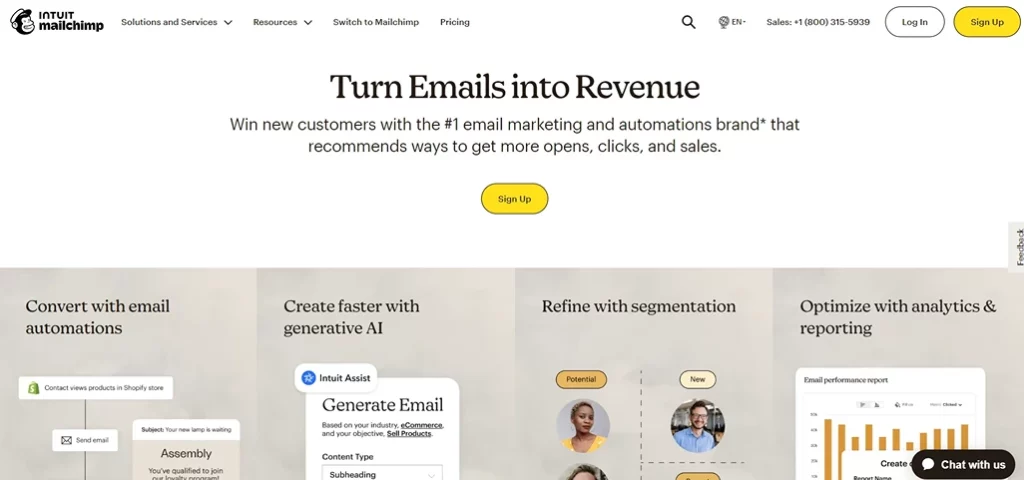
Ben Chestnut and Dan Kurzius founded Mailchimp in 2001. Initially a paid service, Mailchimp introduced a freemium model in 2009. Within a year, the number of users had increased from 85,000 to 450,000.
Instead of seeking external funding, they bootstrap this as a side project, and the company uses their funds and resources.
- Mailchimp strategically partnered with other SaaS companies and agencies, allowing them to cross-promote services and tap into each other’s customer bases. These alliances strengthened Mailchimp’s position in the market.
- The introduction of free plans for small businesses was a game-changer for Mailchimp. This strategy attracted a large user base and allowed the company to upsell premium features to those who required more advanced functionality.
3. Canva
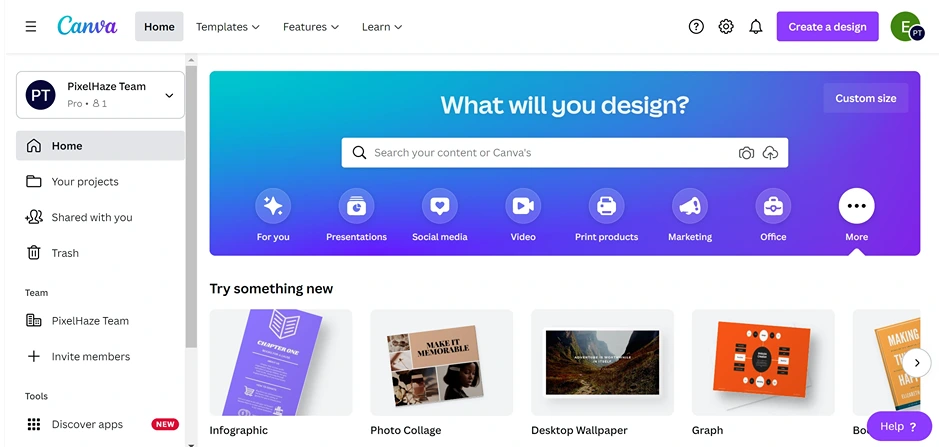
Canva, the graphic design tool, is another exemplar of a SaaS startup that thrived with minimal marketing spend.
Canva’s initial success can be attributed to its freemium model, which allowed users to access a wide array of design features for free. This growth marketing strategy made graphic design accessible to everyone, and as a result, it attracted millions of users worldwide.
- Canva’s early growth was primarily fueled by word-of-mouth marketing. Satisfied users recommended the platform to colleagues, friends, and family, leading to viral growth.
- Canva’s user-friendly interface, combined with its multilingual support, made it accessible to users across the globe. The platform’s versatility contributed to its rapid expansion.
In conclusion, low-budget marketing is not a limitation; it’s an invitation to innovate and excel. Your company can do well in 2024, even if you have a small SaaS startup marketing budget. Use your strengths, get inspiration from successful stories, and be creative and resourceful.
Wrapping Up
SaaS is a booming industry, and its growth is expected to continue for a long time. But, being such a competitive industry, you would think it would require a big budget! Well, that’s not true, contrary to popular belief, a SaaS startup marketing budget does not need a humongous one. This blog post should have by now shed some light on how you can market your SaaS product with minimal cost.
A good product, In-depth market research, a well-thought-out roadmap, and the right skills can help you acquire thousands of customers even when the budget is close to $0!
Nevertheless, keep in mind that organic marketing does not bring results overnight. It might take some while, but it is worth every single second!
Also, you can rely on experienced SaaS marketing agencies like growth.cx to help you market your product with a lesser budget.
FAQs
What is a reasonable marketing budget for a startup?
Determining a reasonable marketing budget for a startup involves considering various factors, including your industry, target market, growth goals, and available resources. As a startup with limited funds, it's crucial to focus on cost-effective marketing strategies that can yield high returns on investment (ROI). You can also start with zero budget.
How much does the average SaaS company spend on marketing?
The average SaaS company spends around 10-15% of its annual revenue on marketing activities. Large companies spend about 30% of their revenue on marketing.
How do you calculate a SaaS marketing budget?
Calculate your SaaS marketing budget by allocating a percentage of your projected annual recurring revenue (ARR) or a specific amount per customer acquisition. Try to find a balance between digital marketing, content creation, advertising, and customer engagement. Optimize your marketing efforts by regularly evaluating your budget based on performance metrics and market trends.
